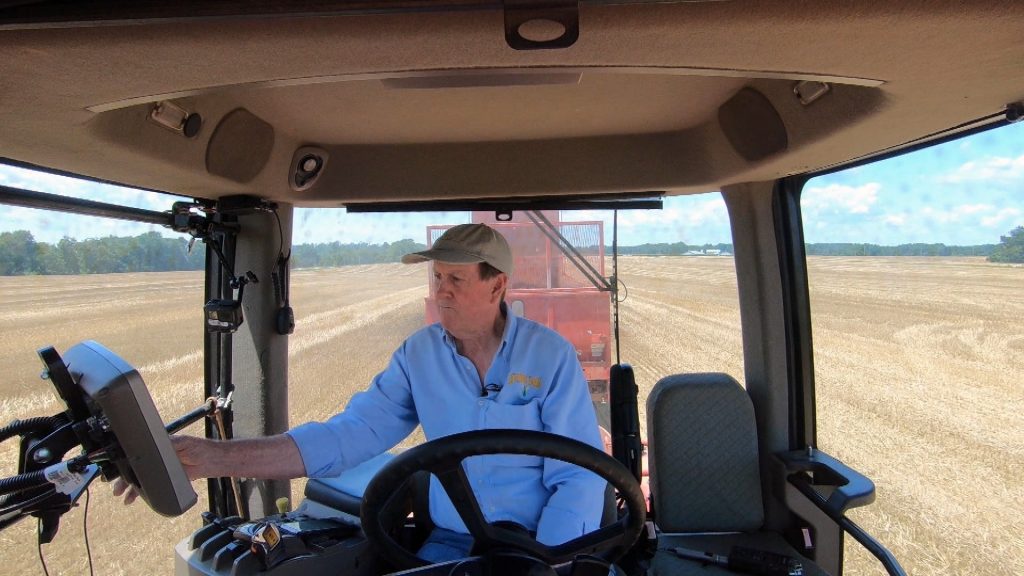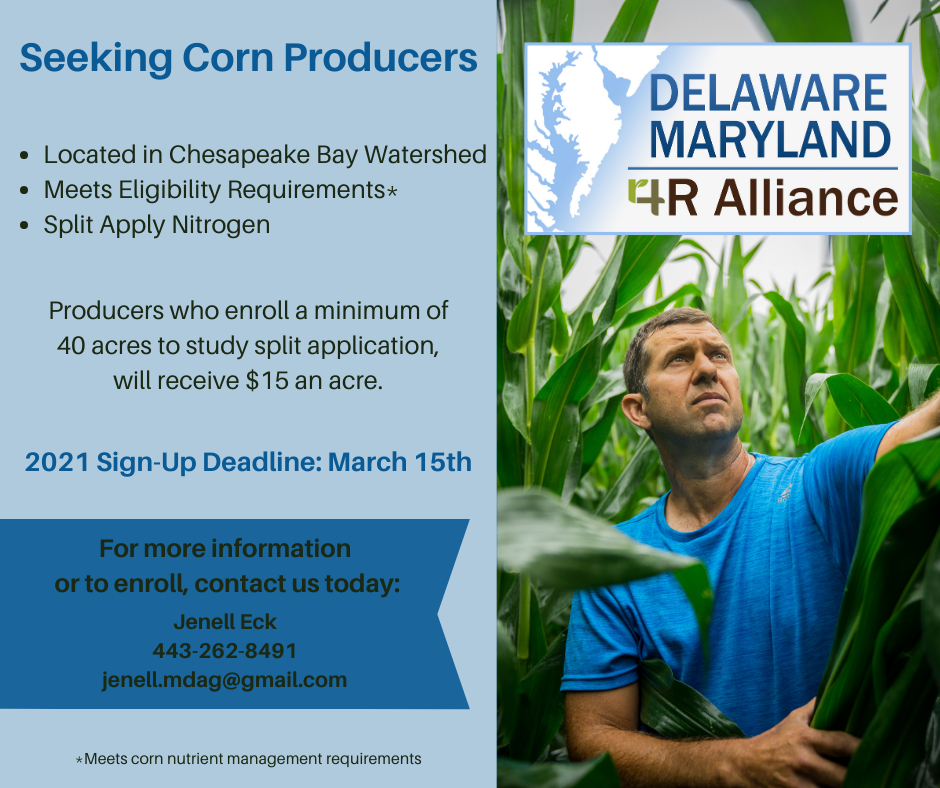Credit: My Maryland Farmers | Original article here.
For Maryland farmer William (Billy) Jeanes, the goal is not just to get the highest yield of crops, the goal is to protect the land that’s been in his family since the 1700s.
The land that Jeanes, along with his father, and generations before them owned is now known as Dividing Farm. The 1,100 acres along the Chesapeake Bay in Earleville has been owned and/or farmed in some way by their ancestors since 1750. Beyond raising row crops such as soybeans, corn, and wheat, Dividing Farm also has a trucking operation that transports mushroom compost – helping others farm in environmentally responsible ways, as well.
Many modern farms, including Jeanes’s, have integrated the use of satellites and in-tractor computers to implement farming practices referred to as “Precision Agriculture.” These tools help farmers collect data from the field to plant seeds and apply nutrients and crop protection products in the most efficient and effective way possible, thereby eliminating added environmental concern for consumers and added expense for farmers.
“The cost of getting into Precision Ag can be astronomical, but I actually do it for the savings. And of course, you’re also doing the right thing as a steward of the land,” said Jeanes. “Not only does it reduce the amount of inputs you are using, such as fertilizer, but it also saves man-hours too, allowing me more time with my family. Everything you do is more exact, without you having to think about it yourself.”
One area where Jeanes excels in Precision Ag is by using the 4Rs of nutrient stewardship:
- Right Source – The right source matches fertilizer analysis to crop needs, to ensure the plant receives a balanced supply of essential nutrients.
- Right Rate – The right rate matches the amount of fertilizer to crop needs, by assessing and making decisions based on soil nutrient supply and plant demand.
- Right Time – The right time makes nutrients available when crops need them, by assessing and making decisions based on the dynamics of crop uptake, soil supply, and nutrient loss risks.
- Right Place – The right place applies and keeps nutrients where crops can use them, to meet site-specific crop needs and limit potential losses from the field.
The guiding principles of the 4Rs are that the practices maximize the economic benefit to the farmer and consumer while minimizing the impacts of nutrients on the environment. The use of 4R practices has been growing across the Chesapeake Bay region as farmers work to protect water quality. Homeowners can also apply the same 4Rs to their lawns and gardens. Consumers and farmers alike want to be sure not only their food supply – and fruits of their labor – is safe, but so are the delicate ecosystems that may be nearby. Farmers throughout the nation follow these practices for the same reasons.
Matthew Farace, a Certified Crop Adviser and the Applied Technology and Communications Lead at Willard Agri-Service, echoes the sentiment. Although it is an investment to transition to Precision Ag farming, it can keep inputs and their costs lower, while year after year improving the different areas or “zones” of a field and boosting the overall efficiency of the land. Willard Agri-Service, a liquid fertilizer company, has evolved over the years building a team of trusted advisers to farmers who work with the Delaware-Maryland 4R Alliance to advance agriculture and the environment.
“Mr. Jeanes and farmers like him are really on the forefront of technology in this industry,” said Farace. “The biggest thing someone in my role does is help farmers with planning throughout the growing season, from taking soil samples, to writing custom planting or fertilizer application prescriptions. Farmers can get down to a precise level on application based on the data we analyze, such as yield, nutrient levels, rates, and timing. Farms can drastically reduce input loss and over-application by using these various tools, which is huge when you consider the notion of all farms across the country using Precision Ag technology. Recently we have seen how even small changes can affect the food supply – good or bad, during the pandemic. By using all, or even some of these tools, farmers can provide a much more plentiful and safe food supply moving forward,” he said.
“We usually use 10 x 10 or 30 x 30-foot grids when creating a planting or fertilizer prescription. The software lays the field out in a grid then overlays historical yield data to show each individual grid block and whether it was a high or low yielding area based on a scale. Then I combine the individual ranges into usually three areas and you can see actual “zones” develop. So, it takes a 50-acre field and cuts it down to three zones that are all managed differently. One could allocate additional inputs to higher-yielding zones, and reduce them to lower-yielding zones, allowing for more efficient application,” said Farace.
“In the Eastern seaboard, we have some of the strictest regulations in the country, but by using these tools, we are meeting them,” said Jeanes. “We KNOW we are doing the best to produce each and every kernel and to preserve the land for future generations.”

